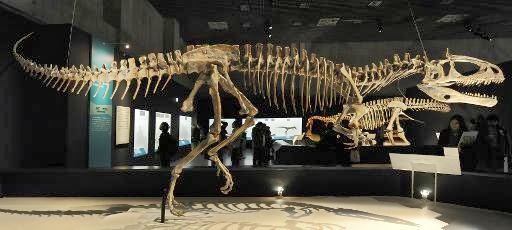
The space rock that smashed into Earth 65 million years ago, famously wiping out the dinosaurs, unleashed acid rain that turned the ocean surface into a witches’ brew, researchers said Sunday.
Delving into the riddle of Earth’s last mass extinction, Japanese scientists said the impact instantly vaporised sulphur-rich rock, creating a vast cloud of sulphur trioxide (SO3) gas.
This mixed with water vapour to create sulphuric acid rain, which would have fallen to the planet’s surface within days, acidifying the surface levels of the ocean and killing life therein.
Those species that were able to survive beneath this lethal layer eventually inherited the seas, according to the study which did not delve into the effects on land animals.
“Concentrated sulphuric acid rains and intense ocean acidification by SO3-rich impact vapours resulted in severe damage to the global ecosystem and were probably responsible for the extinction of many species,” the study said.
The great smashup is known as the Cretaceous-Tertiary extinction.
It occurred when an object, believed to be an asteroid some 10 kilometres (six miles) wide, whacked into the Yucatan peninsula in modern-day Mexico.
It left a crater 180 kilometres (110 miles) wide, ignited a firestorm and kicked up a storm of dust that was driven around the world on high winds, according to the mainstream scenario.
Between 60 and 80 percent of species on Earth were wiped out, according to fossil surveys.
Large species suffered especially: dinosaurs which had roamed the land for some 165 million years, were replaced as the terrestrial kings by mammals.
Extinction riddle
Much speculation has been devoted to precisely how the mass die-out happened.
A common theory is that a “nuclear winter” occurred—the dust pall prevented sunlight reaching the surface, causing vegetation to shrivel and die, and dooming the species that depended on them.
Another, fiercely debated, idea adds acid rain to the mix.
Critics say the collision was far likelier to have released sulphur dioxide (SO2) than SO3, the culprit chemical in acid rain. And, they argue, it would have lingered in the stratosphere rather than fallen back to Earth.
Seeking answers, a team led by Sohsuke Ohno of the Planetary Exploration Research Centre in Chiba set up a special lab rig to replicate—on a tiny scale—what happened that fateful day.
They used a laser beam to vaporise a strand of plastic, which released a high-speed blast of plasma and caused a tiny piece of foil, made of the heavy metal tantalum, to smash into a sample of rock.
The heavy foil fragment replicated on a miniscule scale the mass of the asteroid, while the rock was of a similar makeup as the surface where the asteroid struck.
The team caused collisions ranging from 13 to 25 km per second (47,000-90,000 km or 29,000-55,000 miles per hour), and analysed the gas that was released.
The research, reported in the journal Nature Geoscience, showed that SO3 was by far the dominant molecule, not SO2.
The team also carried out a computer simulation of larger silicate particles that would have been ejected by the impact, and found they too played a part.
The articles rapidly bound with the poisonous vapour to become sulphur acid “aerosols” that fell to the surface.
Heavily acidic waters would explain the overwhelming extinction among surface species of plankton called foraminifera.
Foraminifera are single-celled creatures protected by a calcium carbonate shell, which dissolves in acidic water.
The “acid rain” scenario also helps explain other extinction riddles, including why there was a surge in the number of ferns species after the impact. Ferns love acidic, water-logged conditions such as those described in the study.
Note : The above story is based on materials provided by © 2014 AFP










